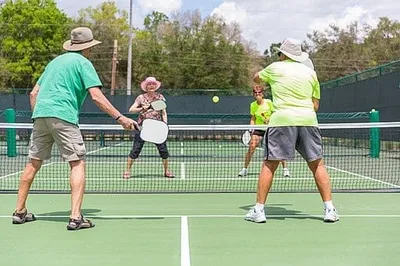Your Complete Guide to Tennis Training and Techniques for Novices
Greetings from the amazing world of tennis! You’ve found a court, picked up a racquet, and are prepared to start an amazing journey filled with strategic thinking, skill improvement, and thrilling rallies. However, where do you start? This thorough manual serves as your road map for navigating the early stages of tennis, giving you the fundamental techniques and training advice you need to establish a strong foundation and stoke your enthusiasm for the sport.
Gaining proficiency in tennis is a journey rather than a race. Your greatest assets are constancy, patience, and an openness to learning. The essential components of beginning tennis training will be dissected in this blog post, from mastering
I. Laying the Groundwork: Essential Fundamentals and Technique
Before you start dreaming of powerful serves and dazzling volleys, it’s crucial to master the foundational strokes. These are the building blocks upon which your entire game will be built.
A. The Grip: Your Connection to the Racquet
Your grip is the crucial link between you and the racquet, influencing the angle of the racquet face and the type of shot you can produce. For beginners, the Continental grip and the Eastern forehand grip are excellent starting points.
- Continental Grip: Often used for serves, volleys, and slices, this grip feels like you’re shaking hands with the racquet. The base knuckle and the heel pad of your hand should align with bevel #2 on an eight-sided racquet handle.
- Eastern Forehand Grip: A versatile grip for forehands, this grip feels like you’re hammering a nail. The base knuckle and the heel pad of your hand should align with bevel #3.
Experiment with both grips to see what feels most natural for different shots, but focus on mastering one or two initially.
B. The Stance: Your Foundation of Power and Balance
A solid stance provides the stability and balance necessary to generate power and react quickly. Beginners should focus on the ready position and the sideways stance.
- Ready Position: Feet shoulder-width apart, knees slightly bent, weight balanced on the balls of your feet, racquet held in front of you with both hands. This is your default position between shots.
- Sideways Stance (Forehand & Backhand): As you prepare to hit a groundstroke, turn your body sideways to the net. Your non-dominant shoulder should point towards your target. This allows for proper weight transfer and a full swing.
C. The Swing: Developing Smooth and Controlled Movements
Beginner swings should prioritize control and proper technique over raw power. Focus on these key elements:
- Take-Back: Initiate the swing smoothly, bringing the racquet back in a controlled manner. For the forehand, think of taking the racquet back in a “loop” or “C” shape. For the backhand, a more compact take-back is often recommended.
- Contact Point: Aim to make contact with the ball slightly in front of your body. This allows you to drive through the ball effectively. Keep your eyes focused on the contact point.
- Follow-Through: Complete your swing fully, allowing your momentum to carry the racquet through towards your target. A good follow-through indicates a full and controlled swing.
D. The Serve: Your Opening Weapon
The serve can be a daunting stroke for beginners, but mastering the basics is essential.
- Stance and Grip: Start with a comfortable stance, feet roughly shoulder-width apart, and use the Continental grip.
- Ball Toss: A consistent ball toss is crucial. Toss the ball slightly in front and above your hitting shoulder. Practice this motion repeatedly.
- Service Motion: Begin with a smooth upward motion, bringing the racquet behind your head (“trophy position”). Then, explode upwards and forward, making contact with the ball at its peak. Focus on a smooth and coordinated motion rather than trying to hit it too hard initially.
E. The Volley: Attacking the Net
Volleys are hit before the ball bounces and are essential for doubles play and aggressive singles tactics.
- Grip: The Continental grip is typically used for volleys.
- Stance: Maintain a ready position near the net, with a slightly narrower stance than for groundstrokes.
- Swing: Volleys involve short, punchy swings. Think of blocking the ball rather than taking a full swing. Keep the racquet face open slightly to lift the ball over the net.
II. Building Your Training Regimen: Practice Makes Progress
Consistent and focused practice is the key to improvement. Here’s how to structure your training:
A. Warm-up and Cool-down:
- Warm-up (5-10 minutes): Start with light cardio like jogging or jumping jacks, followed by dynamic stretches like arm circles, leg swings, and torso twists. This prepares your muscles for activity and reduces the risk of injury.
- Cool-down (5-10 minutes): After your session, perform static stretches, holding each stretch for 20-30 seconds. Focus on the muscles used during tennis, such as shoulders, arms, legs, and back.
B. Stroke Production Drills:
- Wall Practice: Hitting against a wall is an excellent way to develop consistency and rhythm. Focus on your forehand, backhand, and volleys.
- Short Court Drills: Practice hitting groundstrokes and volleys within the service boxes. This helps develop control and feel for the ball.
- Cross-Court Rallies: Practice hitting forehands and backhands cross-court with a partner or coach. Focus on consistency and hitting the ball deep.
- Down-the-Line Rallies: Practice hitting forehands and backhands down the line. This helps develop accuracy and the ability to change the direction of the ball.
- Serving Practice: Dedicate time specifically to practicing your serve. Focus on your toss, grip, and motion. Aim for consistency over power initially.
C. Footwork and Agility Training:
Tennis is a game of movement. Developing good footwork is crucial for getting into the correct position to hit the ball effectively.
- Shadow Footwork: Practice your footwork patterns without hitting a ball. Focus on quick steps, split steps, and maintaining balance.
- Cone Drills: Set up cones in various patterns and practice shuffling, sprinting, and side-stepping around them.
- Ladder Drills: Use an agility ladder to improve foot speed, coordination, and quickness.
D. Physical Conditioning:
While you don’t need to be a marathon runner, a basic level of fitness will significantly enhance your game and prevent injuries.
- Cardiovascular Exercise: Incorporate activities like running, swimming, or cycling into your routine to improve your stamina.
- Strength Training: Focus on exercises that strengthen your core, legs, and shoulders, such as squats, lunges, push-ups, and rows.
- Flexibility Training: Regular stretching will improve your range of motion and help prevent injuries.
III. Developing Your Strategic Mind: Playing Smarter, Not Just Harder
As you develop your strokes, it’s time to start thinking strategically about how to play the game effectively.
A. Understanding Court Positioning:
- Baseline Play: When playing from the baseline, position yourself behind the baseline, roughly in the middle of your opponent’s potential return. Adjust your position based on your opponent’s tendencies and the direction of the previous shot.
- Net Play: When approaching the net, aim to position yourself strategically to cut off angles and put away volleys. In doubles, you and your partner should move together as a unit.
B. Basic Game Plans for Beginners:
- Consistency Over Power: In the early stages, focus on hitting the ball consistently within the court. Avoid trying to hit every shot with maximum power, as this often leads to errors.
- Deep Shots: Aim to hit the ball deep into your opponent’s court. This gives them less time to react and can force errors.
- Cross-Court Dominance: Cross-court shots are generally safer as they have a higher net clearance and a longer distance to travel within the court. Use cross-court rallies to build consistency and probe your opponent’s weaknesses.
- Exploiting Weaknesses: As you play more, you’ll start to identify your opponent’s weaker shots or preferred playing style. Try to exploit these weaknesses by directing the ball to their less comfortable side or forcing them into uncomfortable situations.
- Serving Strategy: Focus on getting your first serve in consistently. Experiment with different serve placements (wide, body, T) to see what works best for you.
C. Mental Toughness:
Tennis is as much a mental game as it is physical.
- Stay Positive: Even if you make mistakes, try to stay positive and focused on the next point.
- Learn from Errors: Don’t dwell on errors, but analyze what went wrong and try to adjust your approach.
- Focus on the Present: Concentrate on the current point and avoid thinking too far ahead.
- Develop a Pre-Point Routine: Having a consistent routine before each point can help you focus and calm your nerves.
IV. The Journey Continues: Resources and Next Steps
Your journey in tennis has just begun! Here are some resources to help you continue your development:
- Tennis Coaches: Consider taking lessons from a certified tennis coach. They can provide personalized feedback and guidance on your technique and strategy.
- Tennis Clubs and Communities: Join a local tennis club or community to find hitting partners and participate in organized events.
- Online Resources: Websites, YouTube channels, and online forums offer a wealth of information on tennis techniques, strategies, and training tips.
- Watch Professional Tennis: Observing professional players can provide valuable insights into advanced techniques and strategies.
Conclusion: Embrace the Process and Enjoy the Game!
Learning tennis takes time, dedication, and a positive attitude. Don’t get discouraged by initial challenges. Celebrate your progress, learn from your mistakes, and most importantly, enjoy the process of developing your skills and the thrill of playing the game. With consistent effort and the right approach, you’ll be well on your way from a baseline beginner to a confident and capable court conqueror. So, grab your racquet, head to the court, and start your exciting tennis adventure today!





